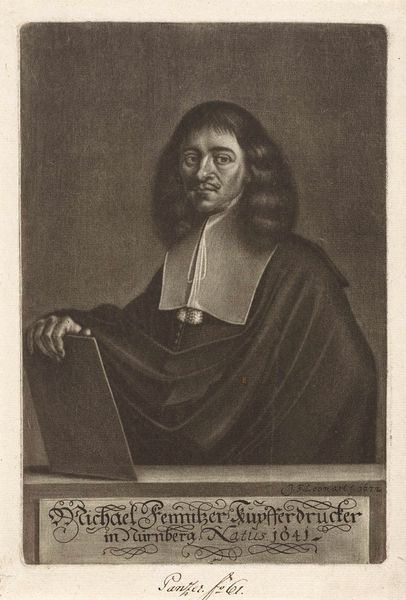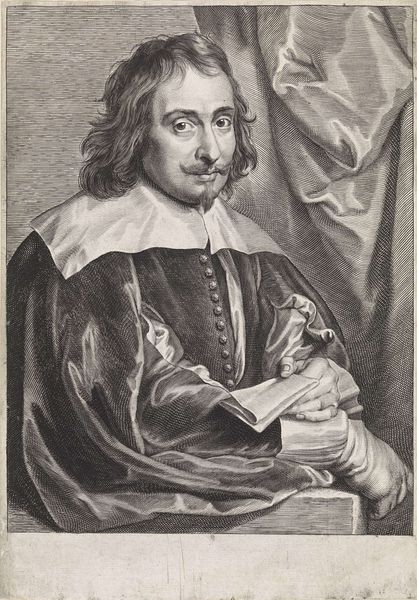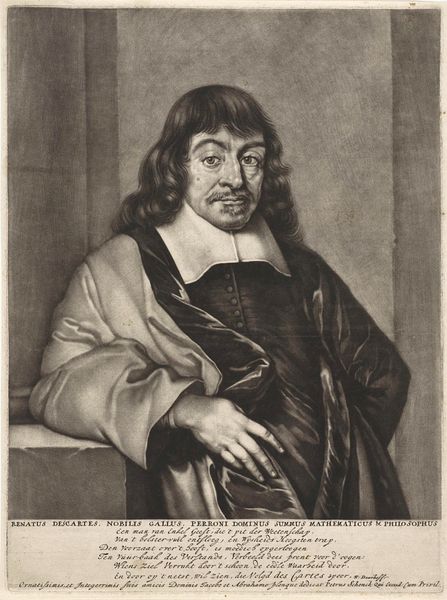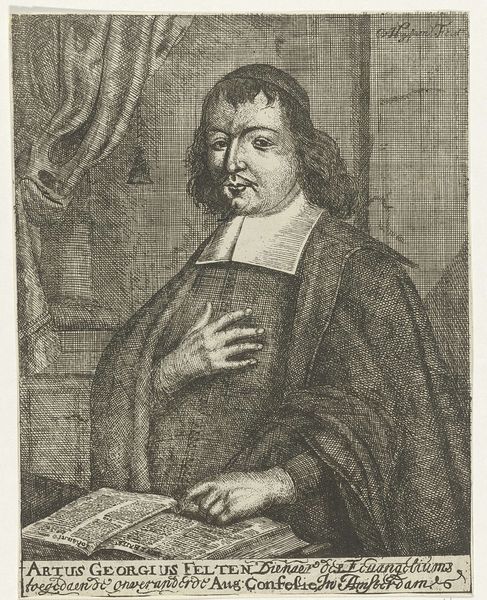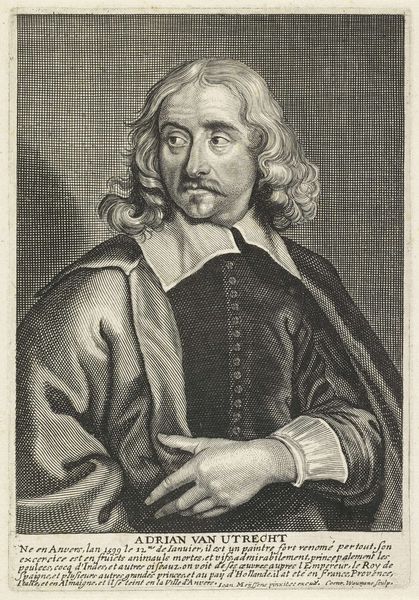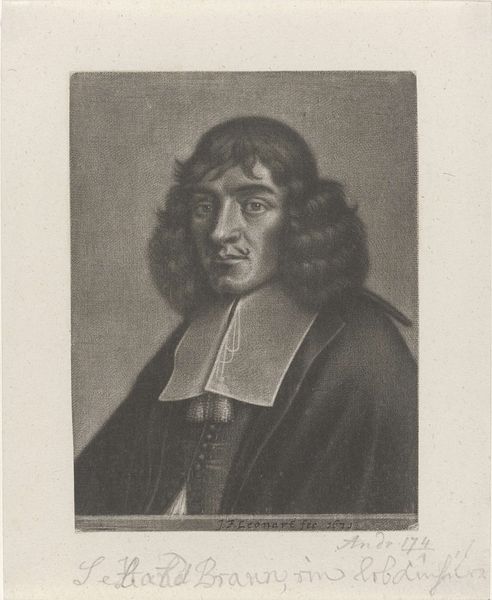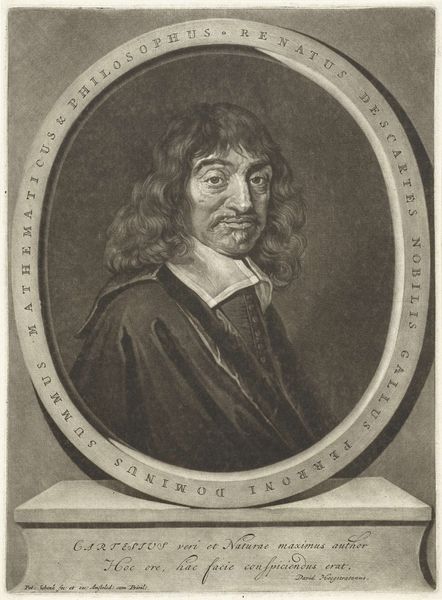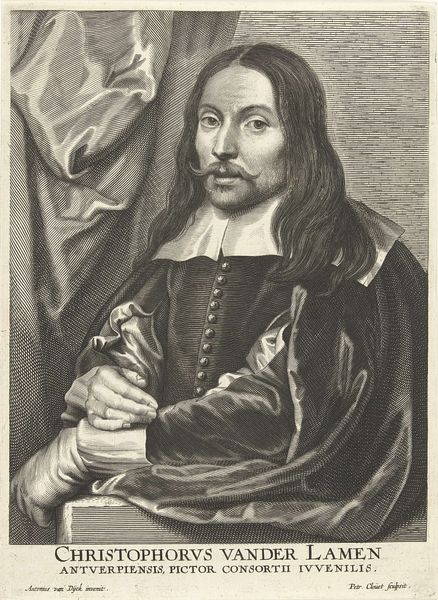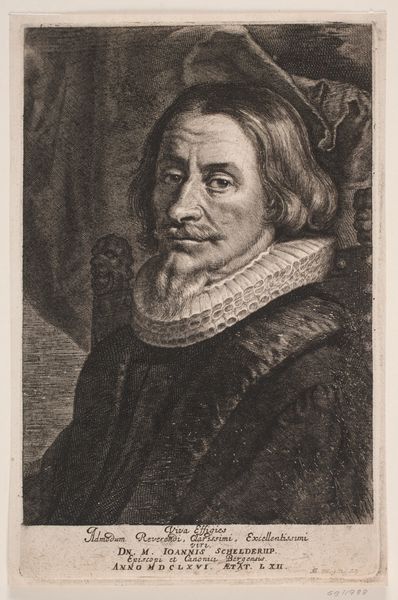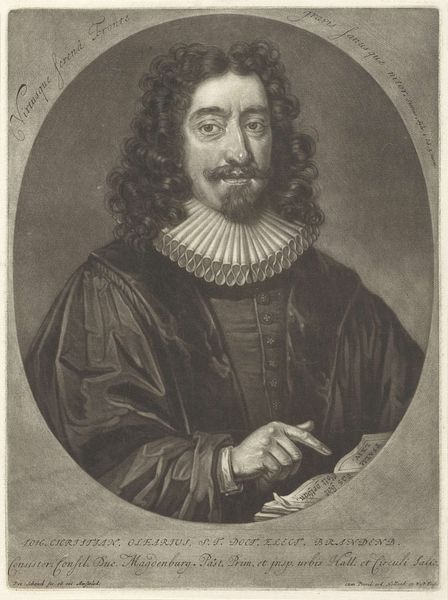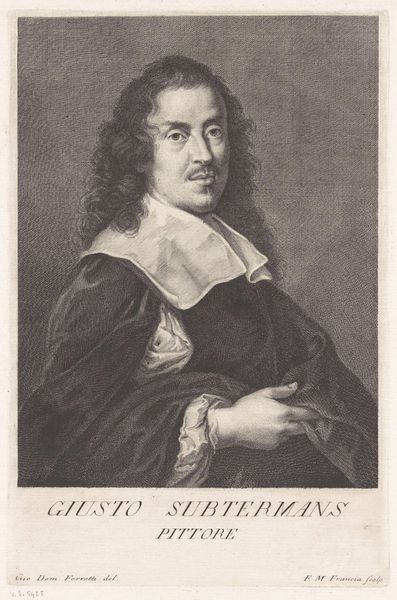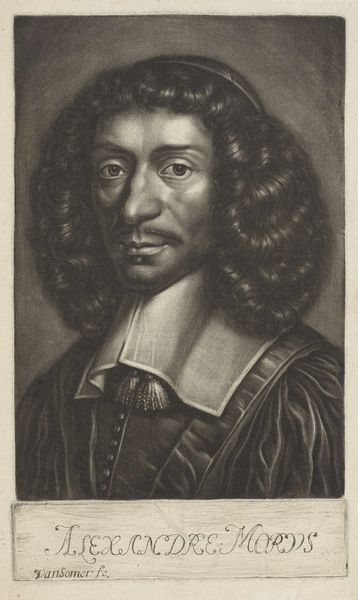
drawing, charcoal
#
portrait
#
drawing
#
baroque
#
charcoal drawing
#
pencil drawing
#
portrait drawing
#
charcoal
#
history-painting
#
portrait art
Dimensions: height 157 mm, width 107 mm
Copyright: Rijks Museum: Open Domain
Curator: Immediately, I’m struck by the intimacy of this portrait. The grey tones lend it a hushed, contemplative atmosphere. Editor: I’d agree. This is "Portret van de drukker Johann Hazich," or "Portrait of the Printer Johann Hazich," made in 1672, attributed to Johann Friedrich Leonard. The work appears to be primarily charcoal. The choice of media feels essential here. Curator: How so? To me, it’s less about the physical medium and more about Hazich's representation during a time when printing was revolutionary. This portrait speaks to the evolving intellectual landscape and Hazich's place within that change, subtly defying older hierarchies by depicting a craftsman with such solemnity. Editor: I see it differently. Look closely at how the charcoal defines the planes of his face and clothing, building shadow. The paper is just as critical a component here: Its texture takes charcoal beautifully. The final product is defined by simple things, charcoal on paper: easily attainable resources for most artisans to craft an item meant for commerce, if even a simple portrait for printing trade. It speaks to Hazich's station in society, which in turn drives access to resources like quality charcoal or drawing instruction, if we choose to see the portrait that way. Curator: It also echoes the complexities of early printing's socio-political role; while democratizing knowledge, it also amplified the voices of certain demographics over others. Portraits like this could solidify status. Did the portrait serve to elevate printing as an enterprise in the broader European landscape? The subtle hint of disdain or sadness in his eyes could perhaps mirror that deeper tension within society. Editor: Agreed, printing trade created social connections that artists tapped into. Access to materials was impacted and made possible through a larger socio-economic chain. Look at the layering. Leonard makes tangible the connection between production of printed images and that social framework of production that allowed for consumption and creation in the first place. Curator: Precisely, those connections are vital for any critical interpretation. Ultimately, analyzing its visual language and Hazich’s place during a transformational period enables richer perspectives, helping the work and subject resonate even today. Editor: And perhaps by focusing on these tangible elements of production, we start to understand and analyze power structures hidden in plain sight, which affect society through accessible means, like print and material production.
Comments
No comments
Be the first to comment and join the conversation on the ultimate creative platform.
